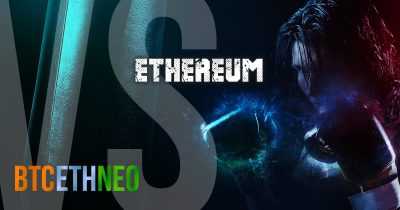Ethereum - The Challenger

Share this article
Ethereum has remained a staunch competitor to Bitcoin since launching in 2014. The brainchild of Russian-Canadian programming mastermind Vitalik Buterin, Ethereum dramatically broadened the scope of what was considered to be possible with blockchain technology.
Unlike Bitcoin, Ethereum is far more than a cryptocurrency. Instead, Ethereum is a blockchain-based distributed computing platform — a complete operating system that presents an extremely diverse range of use cases. The Ethereum blockchain is referred to as a “Turing complete” system and uses its own programming language called Solidity, which makes it possible to create “distributed applications” that run on top of the Ethereum blockchain.
Buterin has commented on the flexibility of the Ethereum blockchain, stating that distributed apps can be used to replace many services that require parallelization:
“You could run StarCraft on the blockchain. Those kinds of things are possible. High level of security and scalability allows all these various other things to be built on top. Ethereum is a secure base layer that doesn’t have too many features.”
The programmable nature of ETH also makes it possible to create crypto tokens on top of the Ethereum blockchain. Tokens created on the ETH blockchain are governed by the Ethereum ERC20 token standard, which is a protocol that allows newly-created Ethereum-based tokens to be quickly and easily traded on exchanges or stored in ERC20 token compatible wallets.
The relative ease with which ERC20 tokens can be created is at least partially responsible for the explosion in initial coin offerings, or ICOs, over the last year. 2017 saw the launch of multiple initial coin offerings that generated hundreds of millions of dollars, most of which were based on the ERC20 standard. As a result, Ethereum grew by more than 3,000% in 2017, and has retained a far more stable price spectrum when compared to Bitcoin.
Ethereum currently handles around 20 transactions per second, which already places it in a faster lane than Bitcoin’s 7 tps. The primary reason it is a very real threat to Bitcoin in 2018, however, is the urgency with which developers are treating the scalability problem. In order to facilitate faster, cheaper transactions that can keep up with Visa-level capacity, Ethereum is currently focusing on “Sharding” the blockchain.
This process is under active development, with the Ethereum Foundation officially launching a subsidy program that incentivises developers with subsidies of up to $1 million for assisting with the project. Buterin believes that the Sharding project, which involves splitting the Ethereum blockchain into a multitude of shards that would process smaller parts of the blockchain state in parallel, would dramatically improve network speed.
According to Buterin this process would allow Ethereum to process “thousands of transactions per second, on chain, without supernodes, master nodes, crazy-server-nodes, consortium chains, or any of that stuff”. According to some estimates, Sharding would allow Ethereum to process up to one million transactions per second, which would allow it to dominate the blockchain ecosystem without challenge.
Other solutions – including taking some transactions off the blockchain entirely, and then consolidating the results every so often (instead of in real-time) – are being developed to solve the scaling issue. Off-chain is not Buterin’s idea of a good time (he was famously angry at the Raiden ICO which raised money to build such a solution) but given the use-cases for Internet of Things applications, it may be necessary eventually to scale in more than one way.
In either case, the key for Ethereum is speed. If a bunch of crypto-kitties can take down Bitcoin’s main challenger, it won’t last long in the ring on reach alone. Especially not with NEO waiting in the wings…
Share this article
